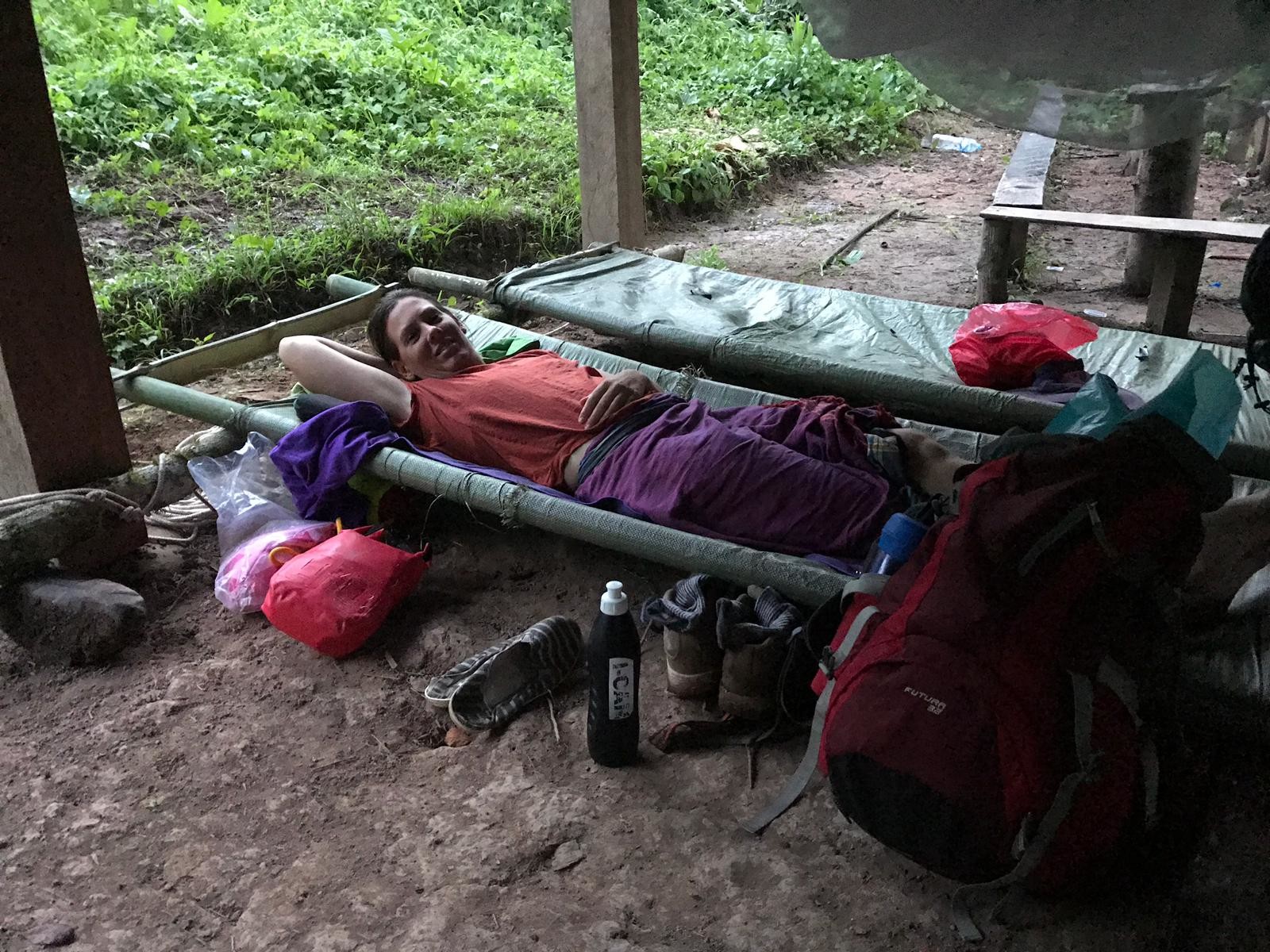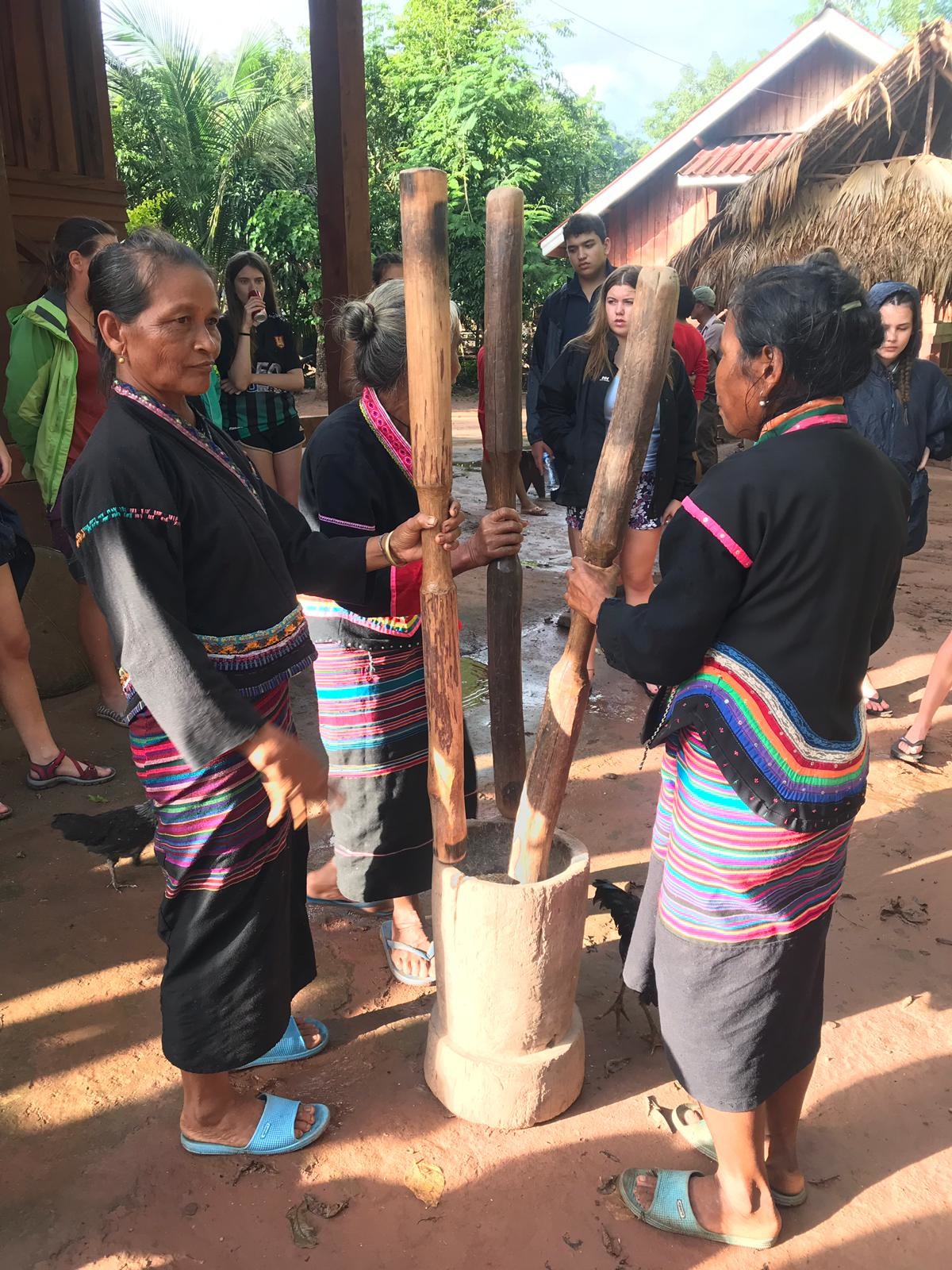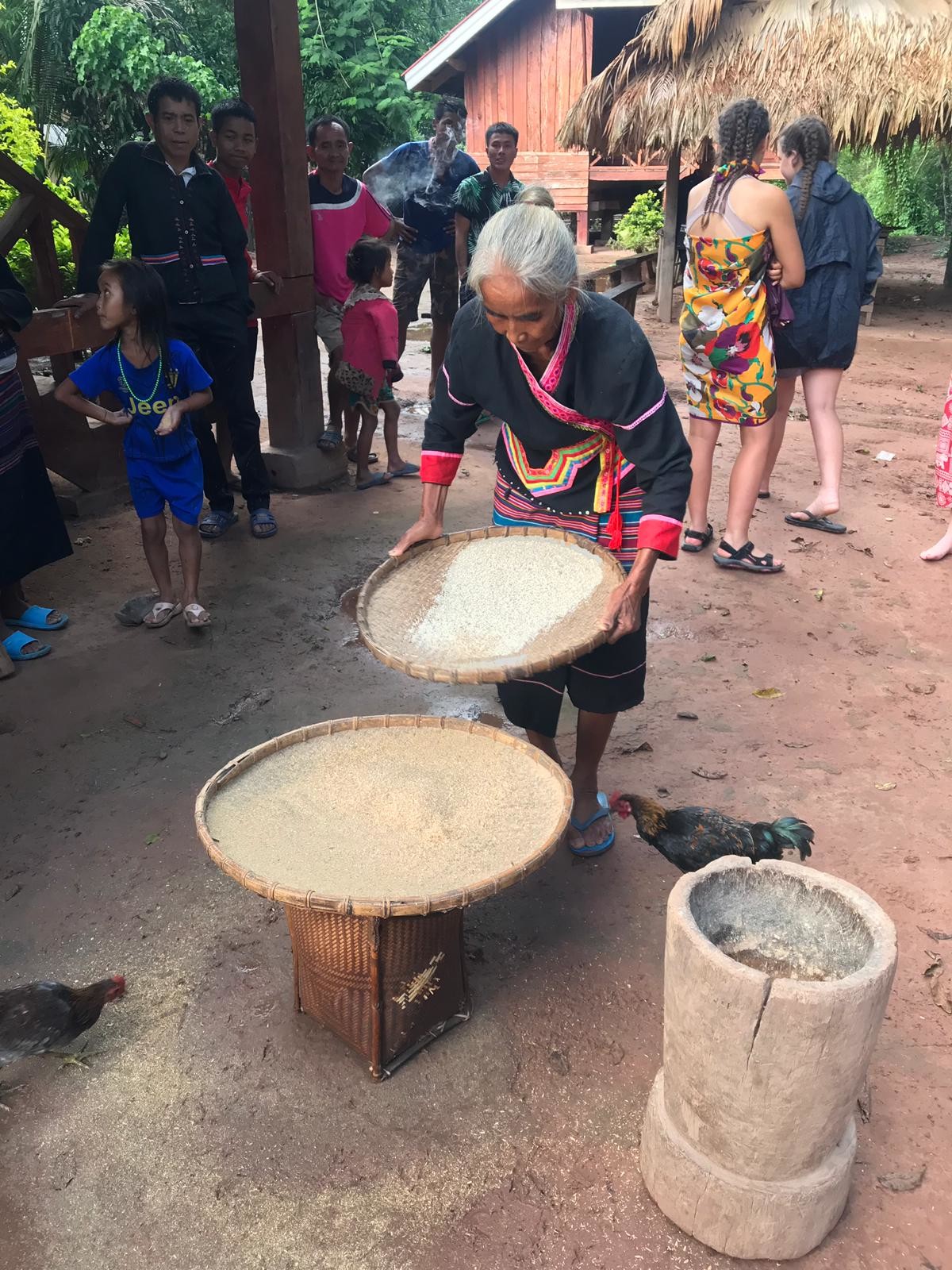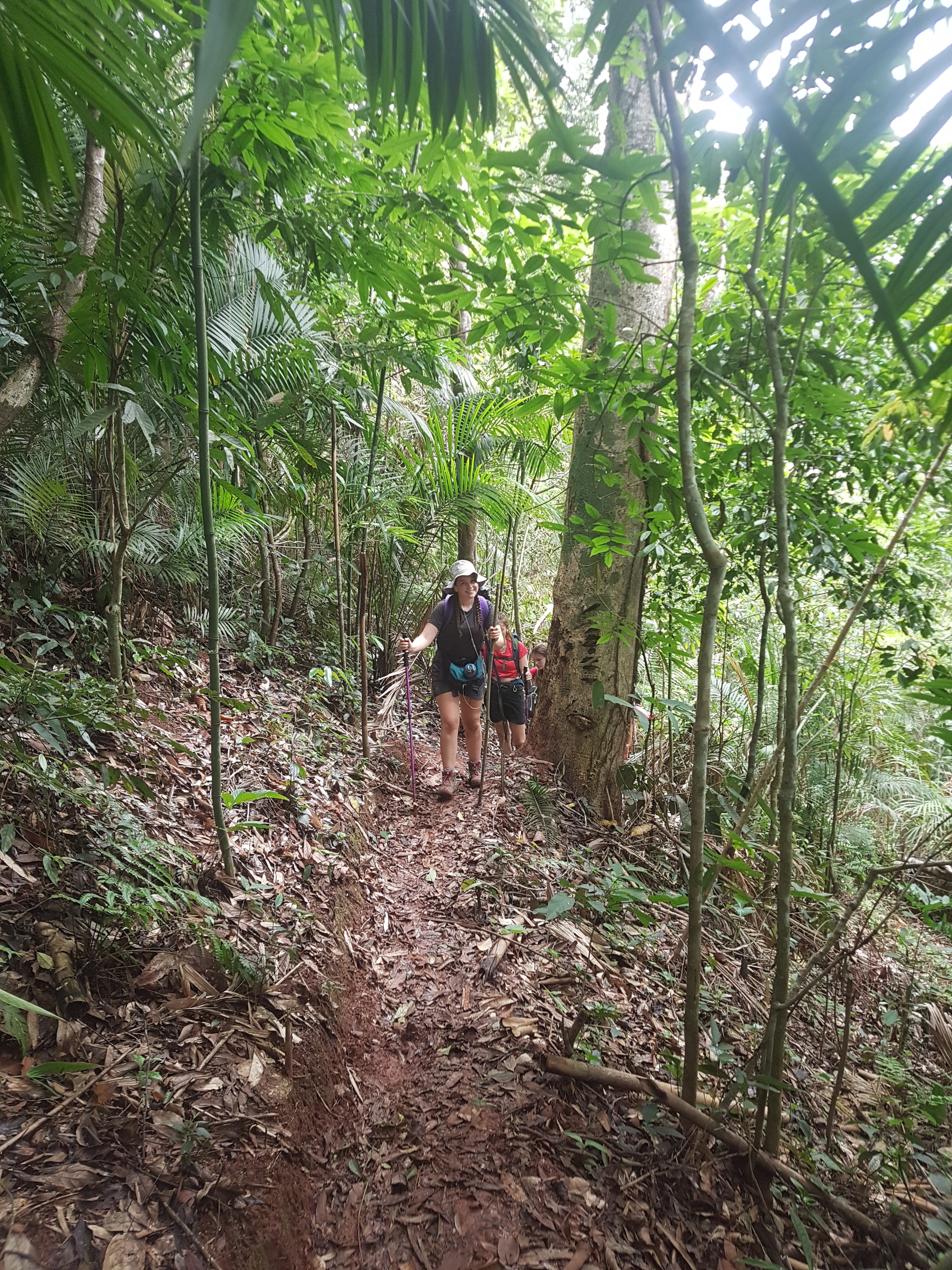A Southeast Asian journey while uni is out. Part Seven D: A Village Evening

The surrounding rural hills and valleys of Luang Namtha had always attracted the intrepid jungle bashing traveler type and it was in the early 90s that the area came to be known more. In the late 90s early 2000s the government realised there was revenue to be earned and began in earnest, to enroll local communities into not only guiding trails, but in creating new ones, trail maintenance and of course, in hosting trekkers. The bamboo stilt hut we had camped in last night was one such community maintained structure, complete with pots, pans and bamboo campbeds.


These, as well as the long bamboo dinner tables we had eaten at, dotted the forest and, where there were very few animals aside from reptiles and rats left to hunt, the US dollar had become a prey to be focused on. But unlike the hunt for the monetized tourist in Vietnam, the communities in and around Luang Namtha were genuinely curious, found it exciting to host the rainbow of nationalities that arrived on their doorsteps and, were thrilled to interact by way of competitive rattan or football.

Come late afternoon, we were encouraged by four elder village men to try our hand and focus our aim in crossbow shooting, the targets set up on cardboard boxes some thirty metres away.


The banter and competition was infectious and guides, crossbow men and students alike, delighted in the misses and scores that were to be had.

Three weather hardened women used to the hard toil of the rice fields alongside the running of extended households, guided us in the age old pestle-and-mortar form of dehusking the rice. They laughed merrily at our obvious inadequacies. Even sifting rice from chaff in their shallow circular woven baskets, was beyond our poor Western trained capabilities.

But the dancing we could all get involved in!
Cohorts of dancers, young and adolescent girls and boys and village women decked out in traditional dress with elaborately embroidered bands of colour over simple black cloth, flicked fingers and wrists in repetitive rhythms to music that streamed forth from a modern sound system complete with bass speaker.

We joined the dancing on numerous occasions and felt included and immersed, not just cash donating observers. In time though, we craved beds for our trek tired bodies but the villagers would have none of it. They seemed to love being dressed up, loved the dancing and were not keen to stop. One by one we slipped away and left them to it.

But they couldn't keep their feet still for long! At 6 a.m. the next morning the speaker was booming and many little feet were dancing, the kids once more decked out in traditional dress.

Packed, fed and ready for more adventure, we began a third day of trekking. What an incredibly beautiful day it was. We climbed back up into the forest, primary forest at that, and followed winding community made tracks along a small river tributary. The forest trees told tales of their past inhabitants, few of whom still existed. Primates, mammals and even birds used to make these forest trees their nesting places, their mating grounds, their home territories. Now tree hollows were less in competition and key predator-prey systems were almost collapsed.

But all was not lost ... butterflies flitted and floated in their hundreds, a snake lay beneath a rock just off the path, insects hummed and buzzed as we disturbed them and the leaf litter russled with life. Termites shuddered in rotting wood and although the birdsong was not continuous or dense, it was there and accompanied us throughout our three tough hill climbs.
The final neverending hill tested calves and endurance, to their credit the student's stamina took them up and up, over little wooden bridges and fallen forest giants, through cardamom tunnels and long bamboo corridors. By now we had a teacher who had fallen sick and was stretched to the limit but we coaxed the team up and over the crest where the way home lay by use of a tuk tuk just 30 minutes downhill. Downhill, out of the forests of northern Laos and into civilization once more.
Photo gallery
Want to have your own Erasmus blog?
If you are experiencing living abroad, you're an avid traveller or want to promote the city where you live... create your own blog and share your adventures!
I want to create my Erasmus blog! →




















Comments (0 comments)